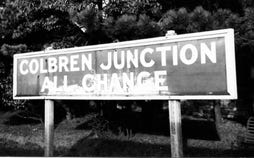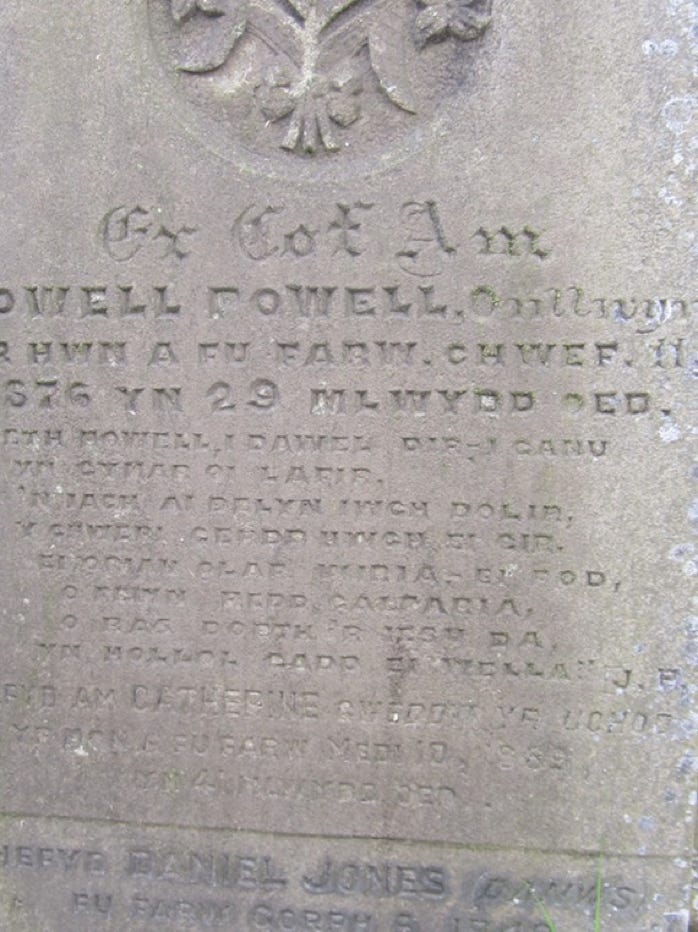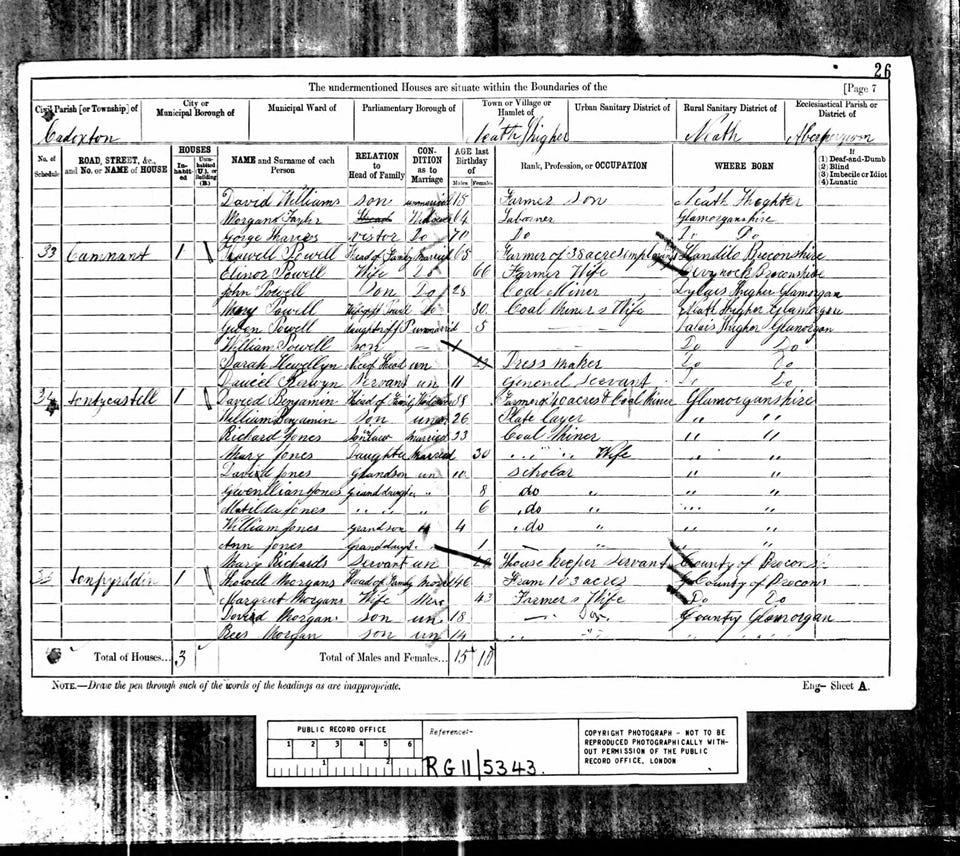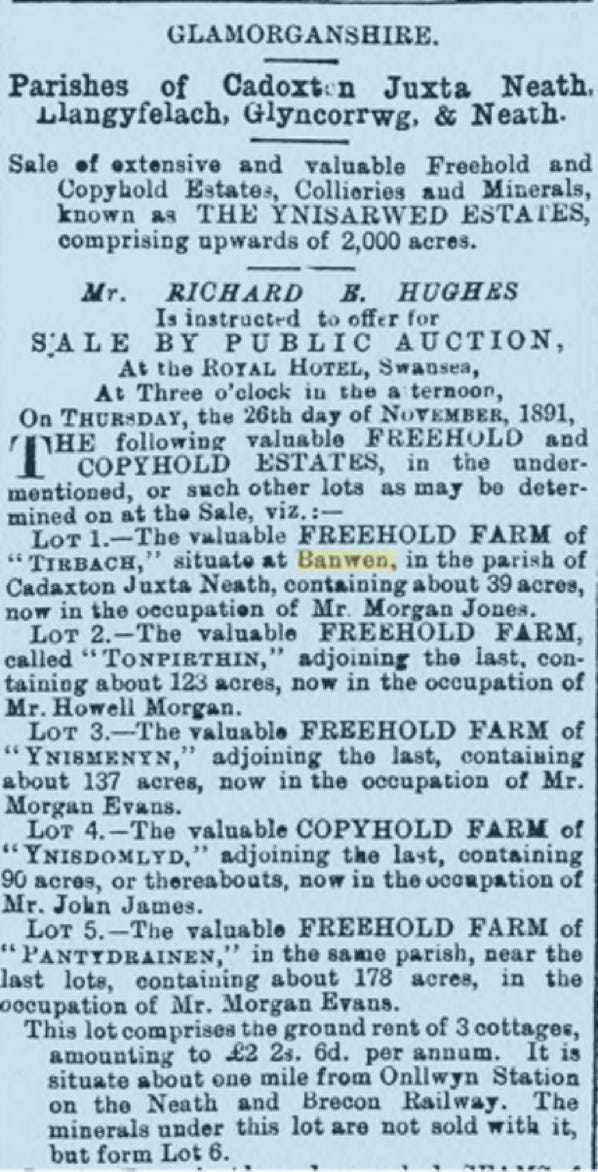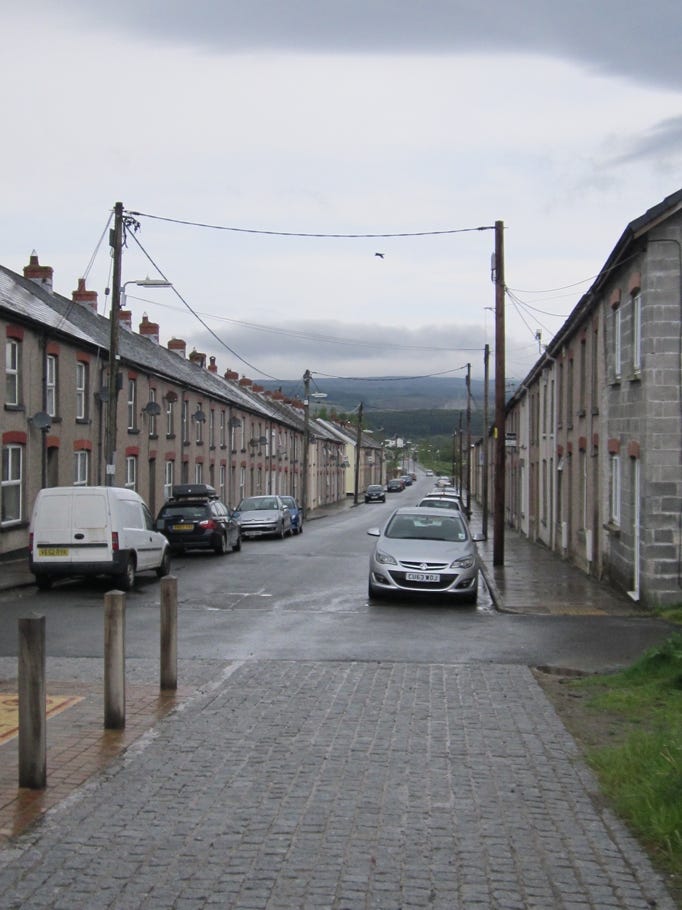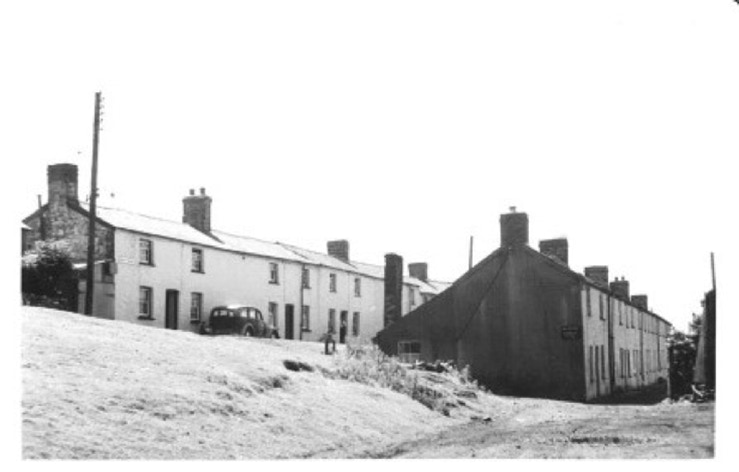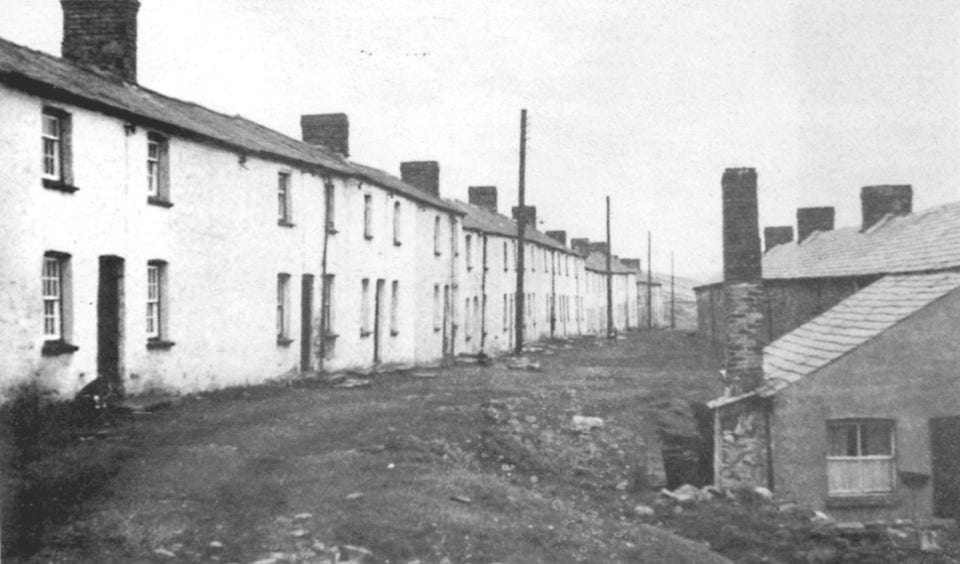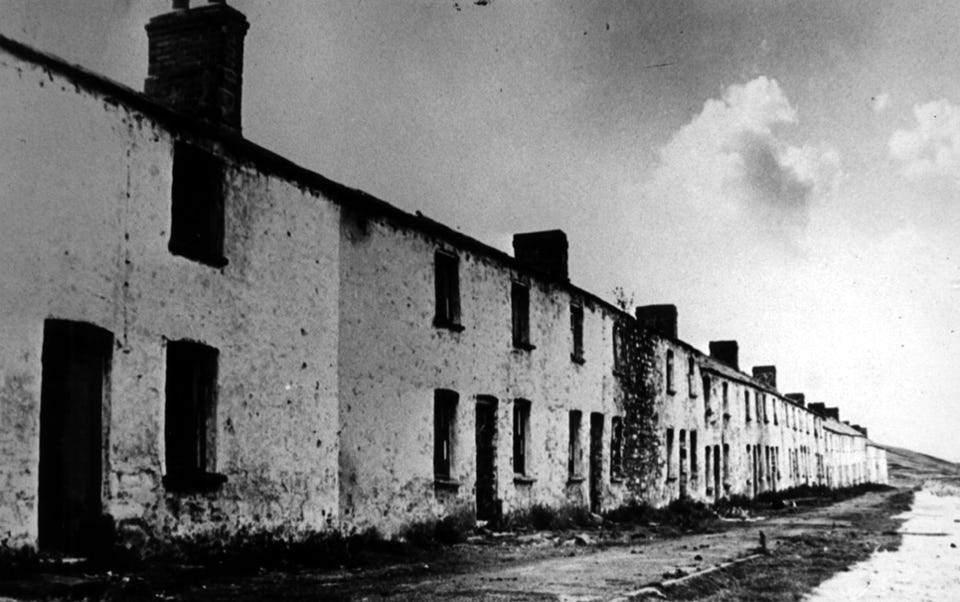By 1891, however, any residual link the family may have had or felt with farming or smallholding was broken with the move to “Back Row”, Onllwyn. By 1891, Camnant farm was occupied by a Morgan and Hannah Jones (no relationship established). In November of that year, the farm was put up for sale, as part of the Ynisarwed estate. Interestingly, the farm is referred to in the particulars as “Tir Bach”.
The advertisement is from “The Cambrian” newspaper of November 13, 1891 and firstly clears up a detail for us: amongst the farms for sale is “Tir Bach” and while this seems to have been the official name of the property, it was certainly referred to elsewhere – e.g. on the 1891 census in the same as “Camnant” and under which title Morgan and Hannah Jones are recorded in this census. More generally, the advertisement throws our Jones family into some relief: as we have seen, the family was local and grew up originally on these and other local farmsteads – we have already seen how William Jones lived and brought up most of his family at Ynysdomlydd, here also for sale. But they never owned any of these properties and moved from farm to farm as tenants until just about this point - when most of them are to be found, industrialised and “urbanised”, to the extent possible in this area, in the growing village centres of Onllwyn, Coelbren and Banwen.
This area is very different to most of the other south Welsh mining valleys, those characterised by deep mines sunk in narrow valleys, with the familiar and seemingly endless rows of workers’ terraces cut in to both the valley floors and sometimes precariously along their slopes. The mines here were located on the plateau at the heads of three valleys, at the shallower edge of the coalfield, and there was thus no need for such concentrated building. There were also not the sheer numbers of workers involved as in some of the other larger valleys. Nonetheless, this was still small-scale urbanisation, not, for example, on the horrific scale of nearby Merthyr Tydfil, for example, but nevertheless an anathema to what had been before. Onllwyn suffered a rash of various hastily constructed workers’ Rows and Terraces at different points in its history; practically all, including Front and Back Row shown here (1960s, source WT Davies), have now been demolished.
These first two Front and Back rows were erected in the early 1840s by John Williams, local ironmaster, to house an increasingly immigrant work force, including at some point many Irish. They were known locally simply as “Y Tai” (the houses), sometimes the Yellow Houses, and were of very simple construction, two up two down, no kitchen or bathroom, with water from a standpipe in the street. Lavatories for Front Row were reached in their gardens, across the street. Various censuses show shocking levels of over crowding; indeed in 1901 we see the full force of familial need and obligation visible with ten people squashed in to Mary Powell’s house at 15 Back Row.
Mary Powell had lost her husband John in 1893 – the cause of his relatively young death at the age of 41 is as yet unknown - so she is shown as Widow, head of the household. Her five children, some adult, are still resident. Also in this house are her widowed brother, John and his three young children. Ten years later, the situation is no better at 45, Roman Road, Banwen, whence Mary moved by 1911 and is now aged 60. She still has three grown-up children living with her, three unrelated young male boarders, all miners, and her widowed sister, Ann Jeffreys. The photograph below shows the size of these houses. This, though, was not at all an uncommon situation: many working families took in at least one boarder – usually young men starting out, from outside the area (two of Mary’s in 1911 were born in Merthyr). Widows could support themselves by developing their houses as boarding establishments with no fear of a “bedroom tax” in these very overcrowded days. Young colliers might have shared beds as one did a night shift and the other a day.
R: The strangely desolate Roman Road, Banwen, today, looking north away from the Maesmarchog Colliery site. With no more colliery workings behind the camera at the top of the road, the street’s rationale now appears lost. Photo by G. Jones, 2014
